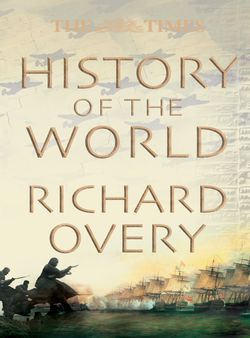Читать книгу The Times History of the World - Richard Overy - Страница 38
500 BC TO AD 550 INDIA: THE FIRST EMPIRES
ОглавлениеFrom 500 BC to AD 550 south Asia witnessed a succession of metropolitan empires centred in north India—the Mauryas, the Kushanas and the Guptas. Although centralized political control was often weak, for the first time the entire subcontinent was integrated within a single but diverse cultural field.
By about 500 BC north India sustained 16 well-articulated polities, or “mahajanapadas”, some of which were still essentially tribal republics and others were already monarchies. This region witnessed tremendous change, as the consolidation of settled agriculture led to the emergence of cities and more complex political systems. Such changes made the older sacrificial cult of the Vedas, which had its origins in the pastoral communities of the Aryan tribes, increasingly obsolete. In its place, at the end of the 5th century BC in the heart of the Gangetic plains, the founders of Buddhism and Jainism formulated their radical new teachings.
THE FIRST EMPIRE
During the 5th century BC the number of mahajanapadas diminished to four—Vajji, Kosala, Kasi and Magadha. After a century of wars, the single kingdom of Magadha dominated, with its splendid new capital of Pataliputra. This was to be the nucleus of the first Indian empire. Shortly after Alexander’s incursion into India in 327 BC, the Mauryan prince Chandragupta seized the Magadhan throne. Chandragupta then conquered the land east of the Indus, swung south to occupy much of central India, and in 305 BC decisively defeated Alexander’s successor in the northwest, Seleucus Nicator. The Mauryan empire that Chandragupta founded reached its zenith under his grandson, Ashoka, who established his rule over most of the subcontinent. Ashoka’s empire was composed of a centralized administrative system spread over a number of thriving cities and their hinterlands. After his conquest of Kalinga in 260 BC, Ashoka publicly converted to Buddhism and adopted a policy of “conquest through righteousness”, or dhammavijaya. In a number of public orders inscribed on pillars and rockfaces throughout the subcontinent, Ashoka called for peace, propagated moral teachings (dhamma), and prohibited Vedic animal sacrifices. These edicts, written in Prakrit, are the first specimens of royal decrees in south Asia.
THE KUSHANA EMPIRE
Mauryan rule did not long survive Ashoka’s death in 232 BC. In the 2nd century bc, the northwest was repeatedly invaded, both by Greeks from Bactria and Parthia, and then by new nomad groups themselves displaced from central Asia. First among these were Scythian tribes called the Shakas who overran Bactria and the Indus valley in the 1st century BC. Then the Kushana branch of the Yüeh-chih horde, who had settled in the Oxus valley after 165 BC, gradually extended their rule inland, subduing the Shakas in western India and reaching Varanasi in the 1st century AD. As well as the Oxus and Indus valleys, large parts of Khotan were included in their cosmopolitan empire, centred in Purusapura. Kushana India was a melting pot of cultures. The empire reached its height of power and influence under Kanishka, who patronized Buddhism and became extensively involved in political conflicts in central Asia.
Both the Shakas and the Kushanas took Indian names and were the first kings to adopt Sanskrit at their courts—the first courtly poems in Sanskrit date from this period—though the native kingdom of the Satavahanas of the Deccan continued to use Prakrit. In the northwest Mahayana Buddhism emerged at this time from more conservative teachings known as Theravada, and developed a more eclectic outlook, emphasizing compassion and worship in an enlarged Buddhist pantheon.
In the same period, India’s ancient trading links with the west were revitalized and greatly extended as the Roman empire rose to power. Ports such as Barbaricum, on the Indus delta, and the entrepot of Barygaza exported turquoise, diamonds, indigo and tortoise-shell, receiving in return a flow of pearls, copper, gold and slaves from the Arab and Mediterranean worlds. Much of the Chinese silk traffic found its way to the city of Taxila, before caravans took it further west. Trade led to other exchanges, as Buddhism spread to central Asia and China.
By the middle of the 2nd century AD the south had also witnessed economic development. The Satavahanas of the Deccan developed a powerful empire and established overland and coastal trading networks and the weaker Tamilspeaking kingdoms of the south established ports on both coasts of the peninsula.
THE GUPTAS
In the 4th century, the native dynasty of the Guptas imposed a new rule, based again in Pataliputra. Following the campaigns of Samudragupta and his son Chandragupta II, their suzerainty was acknowledged over an area almost as great as that of the Mauryan empire. Until repeated Hun incursions ended Gupta power in the 6th century, the Gupta period saw the blossoming of earlier cultural trends, and has become known as the “classical” or “epic” age of Indian history.
